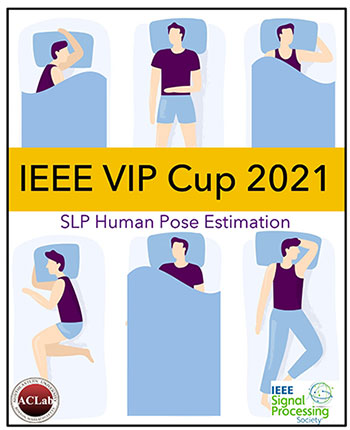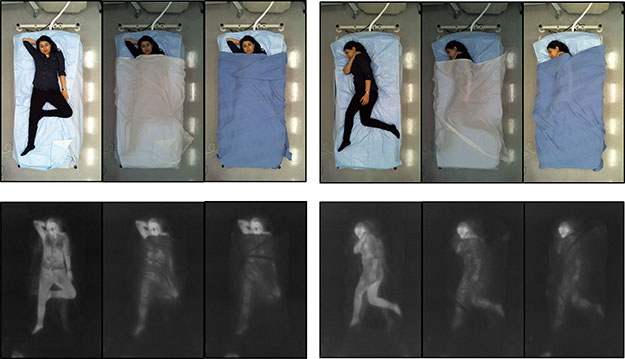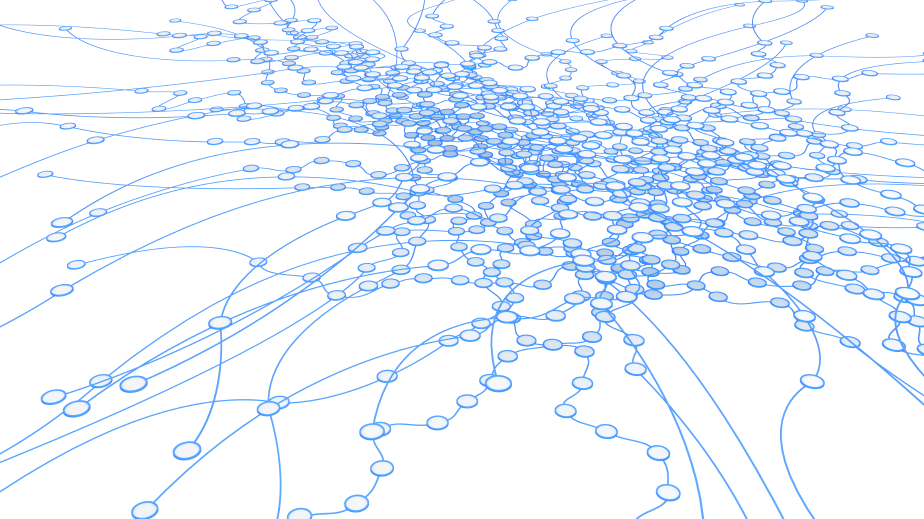- Our Story
- Publications & Resources
- Publications & Resources
- Publications
- IEEE Signal Processing Magazine
- IEEE Journal of Selected Topics in Signal Processing
- IEEE Signal Processing Letters
- IEEE Transactions on Computational Imaging
- IEEE Transactions on Image Processing
- IEEE Transactions on Information Forensics and Security
- IEEE Transactions on Multimedia
- IEEE Transactions on Signal and Information Processing over Networks
- IEEE Transactions on Signal Processing
- IEEE TCI
- IEEE TSIPN
- Data & Challenges
- Submit Manuscript
- Guidelines
- Information for Authors
- Special Issue Deadlines
- Overview Articles
- Top Accessed Articles
- SPS Newsletter
- SigPort
- SPS Resource Center
- Publications FAQ
- Blog
- News
- Dataset Papers
- Conferences & Events
- Community & Involvement
- Professional Development
- For Volunteers
- Information for Authors-OJSP
-
Home
Conferences Events IEEE Signal Processing Magazine IEEE SPL Article IEEE TIFS Article IEEE TMM Article IEEE TSP Article Jobs in Signal Processing Lectures Machine Learning Seasonal Schools Signal Processing News SPM Article SPS Distinguished Lectures SPS Newsletter Article SPS Webinar SPS Webinars SPS Webinar Series Webinar webinars
-
Our Story
What is Signal Processing?

The technology we use, and even rely on, in our everyday lives –computers, radios, video, cell phones – is enabled by signal processing. Learn More » -
Publications & Resources
-
SPS Resources
- Signal Processing Magazine The premier publication of the society.
- SPS Newsletter Monthly updates in Signal Processing
- SPS Resource Center Online library of tutorials, lectures, and presentations.
- SigPort Online repository for reports, papers, and more.
- SPS Feed The latest news, events, and more from the world of Signal Processing.
-
SPS Resources
-
Conferences & Events
-
Community & Involvement
-
Membership
- Join SPS The IEEE Signal Processing Magazine, Conference, Discounts, Awards, Collaborations, and more!
- Chapter Locator Find your local chapter and connect with fellow industry professionals, academics and students
- Women in Signal Processing Networking and engagement opportunities for women across signal processing disciplines
- Students Scholarships, conference discounts, travel grants, SP Cup, VIP Cup, 5-MICC
- Young Professionals Career development opportunities, networking
- Get Involved
-
Technical Committees
- Applied Signal Processing Systems
- Audio and Acoustic Signal Processing
- Bio Imaging and Signal Processing
- Computational Imaging
- Image Video and Multidimensional Signal Processing
- Information Forensics and Security
- Machine Learning for Signal Processing
- Multimedia Signal Processing
- Sensor Array and Multichannel
- Signal Processing for Communication and Networking
- Signal Processing Theory and Methods
- Speech and Language Processing
- Technical Working Groups
- More TC Resources
-
Membership
-
Professional Development
-
Professional Development
- Signal Processing Mentorship Academy (SigMA) Program
- Micro Mentoring Experience Program (MiME)
- Distinguished Lecturer Program
- Distinguished Lecturers
- Distinguished Lecturer Nominations
- Past Lecturers
- Distinguished Industry Speaker Program
- Distinguished Industry Speakers
- Distinguished Industry Speaker Nominations
- Industry Resources
- IEEE Training Materials
- Jobs in Signal Processing: IEEE Job Site
-
Career Resources
- SPS Education Program Educational content in signal processing and related fields.
- Distinguished Lecturer Program Chapters have access to educators and authors in the fields of Signal Processing
- Job Opportunities Signal Processing and Technical Committee specific job opportunities
- Job Submission Form Employers may submit opportunities in the area of Signal Processing.
-
Professional Development
-
For Volunteers
-
For Board & Committee Members
- Board Agenda/Minutes* Agendas, minutes and supporting documentation for Board and Committee Members
- SPS Directory* Directory of volunteers, society and division directory for Board and Committee Members.
- Membership Development Reports* Insight into the Society’s month-over-month and year-over-year growths and declines for Board and Committee Members
-
For Board & Committee Members
Popular Pages
Today's:
- Information for Authors
- IEEE JSTSP Special Issue on Advanced AI and Signal Processing for Low-Altitude Wireless Networks
- Submit Your Papers for ICASSP 2026!
- (ICME 2026) 2026 IEEE International Conference on Multimedia and Expo
- (ICASSP 2026) 2026 IEEE International Conference on Acoustics, Speech, and Signal Processing
- IEEE Transactions on Information Forensics and Security
- Call for Papers for ICASSP 2026 Now Open!
- IEEE Transactions on Multimedia
- Unified EDICS
- IEEE Transactions on Image Processing
- Submit a Manuscript
- Video & Image Processing Cup
- Membership
- Information for Authors OJSP
- (ASRU 2025) 2025 IEEE Automatic Speech Recognition and Understanding Workshop
All time:
- Information for Authors
- Submit a Manuscript
- IEEE Transactions on Image Processing
- IEEE Transactions on Information Forensics and Security
- IEEE Transactions on Multimedia
- IEEE Transactions on Audio, Speech and Language Processing
- IEEE Signal Processing Letters
- IEEE Transactions on Signal Processing
- Conferences & Events
- IEEE Journal of Selected Topics in Signal Processing
- Information for Authors-SPL
- Conference Call for Papers
- Signal Processing 101
- IEEE Signal Processing Magazine
- Guidelines
Last viewed:
- Submit Your Papers for ICASSP 2026!
- Information for Authors
- IEEE Signal Processing Letters
- Call for Project Proposals: IEEE SPS SigMA Program - Signal Processing Mentorship Academy
- Get Involved with Technical Committees by becoming a TC Affiliate
- Activity Update from the IVMSP TC
- IEEE Xplore Digital Library Expands Subscription Options, Index Terms and Search Results Features
- Last Call for Nominations: Technical Committee Vice Chair and Member Positions
- (MLSP 2018) 2018 IEEE International Workshop on Machine Learning for Signal Processing
- Submit a Manuscript
- IEEE Transactions on Information Forensics and Security
- Member Discounts: back-to-school deals on computers
- Basic Peer Review Outline
- SPS Scholarship Program
- Vince Poor, Royal Society of Edinburgh, Ben Franklin, John Anderson, connections and the Industrial Revolution
2021 IEEE VIP Cup at ICIP 2021: Privacy-Preserving In-Bed Human Pose Estimation
You are here
Newsletter Menu
Newsletter Categories
Top Reasons to Join SPS Today!
1. IEEE Signal Processing Magazine
2. Signal Processing Digital Library*
3. Inside Signal Processing Newsletter
4. SPS Resource Center
5. Career advancement & recognition
6. Discounts on conferences and publications
7. Professional networking
8. Communities for students, young professionals, and women
9. Volunteer opportunities
10. Coming soon! PDH/CEU credits
Click here to learn more.
News and Resources for Members of the IEEE Signal Processing Society
2021 IEEE VIP Cup at ICIP 2021: Privacy-Preserving In-Bed Human Pose Estimation
Motivation
 Every person spends around 1/3 of their life in bed. For an infant or a young toddler this percentage can be much higher, and for bed-bound patients it can go up to 100% of their time. In-bed pose estimation is a critical step in many human behavioral monitoring systems, which are focused on prevention, prediction, and management of at-rest or sleep-related conditions in both adults and children. Automatic non-contact human pose estimation topic has received a lot of attention/success especially in the last few years in the artificial intelligence (AI) community thanks to the introduction of deep learning and its power in AI modeling. However, the state-of-the-art vision-based AI algorithms in this field can hardly work under the challenges associated with in-bed human behavior monitoring, which includes significant illumination changes (e.g. full darkness at night), heavy occlusion (e.g. covered by a sheet or a blanket), as well as privacy concerns that mitigate large-scale data collection, necessary for any AI model training. The data quality challenges and privacy concerns have hindered the use of AI-based in-bed behavior monitoring systems at home, in which during the recent Covid19 pandemic, it could have been an effective way to control the spread of the virus by avoiding in-person visits to the clinics.
Every person spends around 1/3 of their life in bed. For an infant or a young toddler this percentage can be much higher, and for bed-bound patients it can go up to 100% of their time. In-bed pose estimation is a critical step in many human behavioral monitoring systems, which are focused on prevention, prediction, and management of at-rest or sleep-related conditions in both adults and children. Automatic non-contact human pose estimation topic has received a lot of attention/success especially in the last few years in the artificial intelligence (AI) community thanks to the introduction of deep learning and its power in AI modeling. However, the state-of-the-art vision-based AI algorithms in this field can hardly work under the challenges associated with in-bed human behavior monitoring, which includes significant illumination changes (e.g. full darkness at night), heavy occlusion (e.g. covered by a sheet or a blanket), as well as privacy concerns that mitigate large-scale data collection, necessary for any AI model training. The data quality challenges and privacy concerns have hindered the use of AI-based in-bed behavior monitoring systems at home, in which during the recent Covid19 pandemic, it could have been an effective way to control the spread of the virus by avoiding in-person visits to the clinics.
In a recent work, Liu, et al. (MICCAI’19) successfully estimated the human poses via a non-RGB imaging modality (i.e. thermal data based on the long wavelength infrared imaging; LWIR) under heavy occlusion and in total darkness by forming a large-scale dataset called SLP specific on in-bed human poses. However, their successful results were heavily dependent on a training set with a large number of covered examples with full annotation, which is very costly to collect and at the same time requires frequent manual interventions for the labeling. Moreover, the cover conditions captured in the SLP dataset cannot represent all possible occluded cases in the real-world settings such as hospital rooms or nursing homes, where the person could be under a different cover, has an overbed table on their bed, or attached to a monitoring/treatment device. These make it even infeasible to get the ground truth pose labels under such real-world application conditions.
Practically, a realistic way to handle these cases is through developing robust in-bed human pose estimation algorithms that have access only to the labelled uncovered human pose images as well as the unlabelled occluded pose images, which are more practical to collect in a working environment.
Theoretically, estimating human pose from covered labeled cases to unlabeled ones can be deemed as a domain adaptation problem. For the human pose estimation problem although multiple datasets exist such as MPII, LSP and COCO, yet they are mainly RGB images from daily activities, which have huge domain shifts with our target problem. Although domain adaptation topic has been studied in machine learning in the last few decades, mainstream algorithms mainly focus on the classification problem instead of a regression task, such as pose estimation. The 2021 VIP Cup challenge is in fact a domain adaptation problem for regression with a practical application, not been addressed before.
In this 2021 VIP Cup challenge, we seek computer vision-based solutions for in-bed pose estimation under the covers, where no annotations are available for covered cases during model training, while the contestants have access to the large amounts of labeled data in no-cover cases. The compilation of this task enables the in-bed behavior monitoring technologies to work on novel subjects and environments, where no prior training data is accessible.

Dataset Description
Simultaneously-collected multimodal Lying Pose (SLP) dataset is an in-bed human pose dataset collected from 109 participants under two different settings (102 participants from a home setting and 7 participants from a hospital room). Participants were asked to lie in the bed and randomly change their poses under three main categories of supine, left side, and right side. For each category, 15 poses are collected. Overall 13,770 pose samples for home setting and 945 samples for hospital setting are collected in each of the four imaging modalities including RGB, depth, LWIR and pressure map. Moreover, the cover conditions were changed from uncover, to cover one (a thin sheet with approx. 1mm thickness), and then to cover two (a thick blanket with approx. 3mm thickness). In this challenge, the contestants are asked to estimate the human pose in covered conditions without access to any labeled covered examples during training. As the LWIR imaging holds higher practical value for a low-cost in-bed pose monitoring solution, we will focus on this modality for this challenge.
Instead of the whole SLP dataset, the partition and annotation for this challenge is given as:
Train + Validation Datasets: (80 subjects, annotated)
Training Set: (80 subjects)
- Annotated uncovered data from 30 subjects.
- Unannotated data with a thin cover from 25 subjects.
- Unannotated data with a thick cover from another 25.
Validation Set: (10 subjects)
- Unannotated data with a thin cover from 5 subjects.
- Unannotated data with a thick cover from another 5.
The corresponding LWIR and RGB data will be provided. Alignment mapping between RGB and LWIR will be provided.
Test Dataset: (12 novel subjects from home setting, 7 from hospital setting, unannotated)
- home setting: 6 thin cover, 6 thick cover.
- hospital setting: 3 thin cover, 4 thick cover.
- LWIR only will be provided for the test set to simulate a practical application of overnight monitoring when RGB is not available.
The test dataset into two subsets: Test Set 1 and Test Set 2
As the LWIR is already human centered. No bounding boxes are provided.
Schedule (Time need to change according to this year)
Evaluation Criteria
Finalists will be selected according to their test result performance, novelty of their algorithm, the quality of the report, and the reproducibility of their code.
Our metric will rely on the well-recognized metrics in human pose estimation field, namely PCKh@0.5 and PCKh@0.2 and also the PCKh, and the area under curve PCKh-AUC (calculated on a normalized area of PCKh from 0 to 0.5). To focus on the challenging part, our evaluation will be conducted only over the covered cases.
Supported by:
- Northeastern University
- ICIP committee
Organizers
- Augmented Cognition Lab at Northeastern University.
- Sarah Ostadabbas (ostdabbas@ece.neu.edu)
- Shuangjun Liu (shuliu@ece.neu.edu)
- Xiaofei Huang (xhuang@ece.neu.edu)
- Nihang Fu (nihang@ece.neu.edu)
Open Calls
| Nomination/Position | Deadline |
|---|---|
| Submit Your Papers for ICASSP 2026! | 17 September 2025 |
| Call for Nominations: Awards Board, Industry Board and Nominations & Elections Committee | 19 September 2025 |
| Meet the 2025 Candidates: IEEE President-Elect | 1 October 2025 |
| Call for proposals: 2027 IEEE Conference on Artificial Intelligence (CAI) | 1 October 2025 |
| Take Part in the 2025 Low-Resource Audio Codec (LRAC) Challenge | 1 October 2025 |
| Call for Nominations for the SPS Chapter of the Year Award | 15 October 2025 |
| Call for Papers for 2026 LRAC Workshop | 22 October 2025 |
| Submit a Proposal for ICASSP 2030 | 31 October 2025 |
| Call for Project Proposals: IEEE SPS SigMA Program - Signal Processing Mentorship Academy | 2 November 2025 |
Technical Committee News
Member Highlights
Education & Resources
Society News
- 108 Signal Processing Society Members Elevated to Senior Member!
- Updated SPS Chapter Logo Usage and Branding Guidelines
- Student Membership in Region 9
- Job Opportunities in Signal Processing
- Call for Nominations: Awards Board Chair and Fellow Evaluation Committee - Chair and Vice Chair Positions
- Call for Nominations: SPS Chapter of the Year Award
SPS Social Media
- IEEE SPS Facebook Page https://www.facebook.com/ieeeSPS
- IEEE SPS X Page https://x.com/IEEEsps
- IEEE SPS Instagram Page https://www.instagram.com/ieeesps/?hl=en
- IEEE SPS LinkedIn Page https://www.linkedin.com/company/ieeesps/
- IEEE SPS YouTube Channel https://www.youtube.com/ieeeSPS
Home | Sitemap | Contact | Accessibility | Nondiscrimination Policy | IEEE Ethics Reporting | IEEE Privacy Policy | Terms | Feedback
© Copyright 2025 IEEE - All rights reserved. Use of this website signifies your agreement to the IEEE Terms and Conditions.
A public charity, IEEE is the world's largest technical professional organization dedicated to advancing technology for the benefit of humanity.









